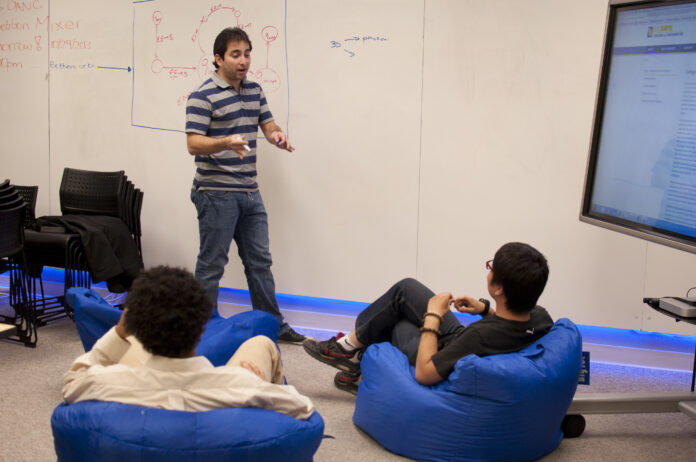On Oct. 11, the UC Davis Engineering Startup Center opened with a launch event in Ghausi Hall from 3 to 6 p.m. This event was essentially a reception and celebration of the finished Engineering Student Startup Center (ESSC), a center for use by UC Davis students as a platform to launch their entrepreneurial ideas.
Bruce White, the director of the Engineering Transitional Technology Center at UC Davis, hosted this event. Some other speakers featured at this reception were Enrique Lavernia, the dean of the College of Engineering, and Lucas Arzola, the founder and CEO of BetaVersity, the company that made the Startup Center possible.
BetaVersity, started by a group of UC Davis alumni, specializes in creating spaces and tools to turn ideas into reality. The group shares the common belief that entrepreneurship can solve problems and improve lives throughout the world.
“There is simply no substitute for the hands-on experience and student-led initiative that occurs within our beta spaces,” said Blake Marggraff, chief revenue officer for BetaVersity.
However, the crux of this reception was the speech made by keynote speaker Tina Seelig, the executive director of the Technology Ventures Program at Stanford University. She is a professor working with students to develop skills for entrepreneurship, creativity and innovation.
“Contrary to everything you think, I believe that creativity [is a skill] that can actually be taught,” Seelig said.
In her speech, Seelig outlined six components for generating creativity — resources, knowledge, attitude, habitat, imagination and culture. She argued that creativity is a skill.
“The way you ask the question determines the type of answers you get,” Seelig said. She criticized the way problem solving is taught in our schools. “We often teach children how to solve math problems like ‘5+5 =?,’” Seelig said.
With this problem, there is only one answer in the solution set which is 10. However, Seelig suggested that we should be reframing the problem in ways like setting “x+y = 10.” She argued that if you do not ask the question in a thoughtful way, you won’t get interesting answers.
“So many people don’t live up to their creative potential because they are in environments that don’t encourage innovation,” Seelig said.
Seelig claimed that companies like Google and Pixar are innovative because they have colorful and stimulating offices. For example, these companies have fun venues such as bowling alleys, slides and rock climbing walls. Seelig hopes the ESSC will provide an environment in which students are comfortable which will foster creativity.
The ESSC features a 3D printer/scanner, a huge computer monitor, whiteboard walls and a Shopbot CNC device for milling and machining plastic, wood and aluminum.
White said that it can benefit all the students of UC Davis as it is trying to draw in students from a variety of majors.
President of the UC Davis Entrepreneurship and Technology Club (ETEC) Natalie Qabazard encourages everyone to join.
“The ESSC is a milestone for students of all disciplines because it’s the first center of its kind on the UC Davis campus,” Qabazard said.
The center provides a design space for all students to work on prototyping their ideas, using the skills they have acquired through academia and applying it to their ventures. Her goal as the president of ETEC is to bring diversity to the center by reaching out to various groups and departments on campus.
“I am looking for an environment in which I could tap my creative potential, freely make mistakes and learn from them; the ESSC is perfect for this,” said Jackie Zhang, a first-year computer science and engineering major.
Similarly, Enrique Lavernia, the dean of the College of Engineering, is eager to see what innovation this center will bring.
“The ESSC will facilitate the development of the entrepreneurial skills of UC Davis students, provide pragmatic hands-on learning opportunities and help speed the delivery of high-impact technology to society,” Lavernia said. “The ESSC will also facilitate collaboration with our colleagues in industry, colleagues across campus and other centers.”





